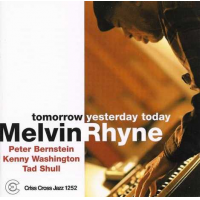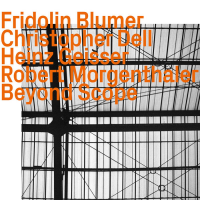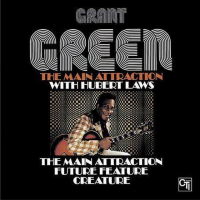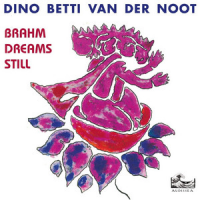Home » Jazz Articles » Liner Notes » Jonathan Kreisberg: Night Songs
Jonathan Kreisberg: Night Songs
With six dates already as a leader under his belt, including two previous efforts for Criss Cross, guitarist Jonathan Kreisberg decided to tap into the creative possibilities offered by assembling an album built almost entirely on ballads. In the process, he reveals another side of his musical personality that will be a revelation to fans only familiar with previous sets that predominantly featured his own original compositions. Nonetheless, it should be noted up front that Kreisberg was not interested in creating a novelty just for the sake of trying something different, but instead came to the concept in a very organic manner.
"In the past I've often joked that playing the up tempo tunes were just killing time until I could get to the next ballad," explains Jonathan. "I definitely feel that ballads are a great place to get to the pure melody and feeling of a tune. Ballads get right to the heart of the music and the player." So when producer Gerry Teekens contacted Kreisberg about doing a follow-up to 2004's New For Now (Criss 1266), the wheels began to spin. "When Criss Cross called about doing something, I decided to try and capture a certain mood I was in at that time," the guitarist says. "It was definitely at one of the most introspective points in my life. So I decided not to counteract the moment or 'self medicate' by escaping with an album of fiery and complex tunes. I decided to go with the mode I was in."
Of course, there's a danger in too much of any one thing, no matter how desirable it might be. In creating an album that might be considered mood music, Kreisberg has avoided an offering of musical wallpaper by staying committed to strong improvisations and group interaction that beckons a closer listen. As he tells it, "I wanted each take to have it's own personality. It's all basically different approaches to great classic ballads, but 'night songs' is probably a better name for the category they all end up falling into. I wanted to make an album that was basically for the late hours. I think it's the time zone I feel most connected to."
Like many guitarists, Kreisberg's artistic inspirations go beyond the classic works of fellow plectrists from the jazz cannon. In turning a phrase and building lines, much can be gained by listening closely to vocalists and other instrumentalists, especially when it comes to material of this particular genre. "My main influences for making a record like this really have little to do with the guitar," Kreisberg confirms. "The great ballad players that have influenced me are Keith Jarrett, Bill Evans, Miles Davis, and Frank Sinatra. And despite all his recognition as an innovator of complex music, John Coltrane is really one of the greatest at phrasing a simple melody."
Choosing like-minded colleagues in this musical endeavor has proven to be integral to the overall success of the disc. Possibly even more important because of the material that the guitarist has chosen, there's a call for selfless support that services the requirements of each piece without distracting from the overall feel. From Kreisberg's current trio come bassist Matt Penman and drummer Mark Ferber. The former is a New Zealand native who made his way to the United States in 1994 to study at the Berklee College of Music and has since become a first-call bassist working with the SF Jazz Collective, Kurt Rosenwinkel, and Chris Cheek. As for Ferber, his studies with legendary trapmen such as Billy Higgins and Joe LaBarbera prepared him for a top spot on the New York scene with credits that include Lee Konitz, Norah Jones, Fred Hersch, and Anthony Wilson.
Also lending a hand on several tracks is Gary Versace, who along with Ferber can be heard on the previously mentioned New For Now. In the seven years since he settled in New York, Versace has built quite a reputation for his ability to play several instruments and adapt to any situation. Whether it's plugging in the Hammond B3 for Matt Wilson's Arts and Crafts, employing the accordion as part of the orchestrations of Maria Schneider, or playing piano in the vibrant ensembles of John Hollenbeck, Versace handles it all with fervor and originality. He can also be heard as a leader on the recent Criss Cross set Outside In (Criss 1298).
Gently establishing a late night mood right off the bat, "Laura" engages Kreisberg, on acoustic guitar, and Versace in a charming duet. "This was the last tune we recorded on the session and it definitely was a special one," says Jonathan. "It made me wish that Gary and I had another day to hang and play some more tunes. Gary is known as an organist with a very creative angle, but his touch on the piano is truly amazing. I think the two of us were lucky to capture a bit of the mystery of the 'face in the misty light.'"
The trio steps in for "Autumn in New York," which Kreisberg calls "one of the greatest standards ever written." He further adds, "The lyrics are really serious too. It's a beautiful poem about the bittersweet emotional landscape of New York." Penman contributes the first of several solos to be heard over the course of the program. "Matt's work here is evidence of his amazing melodicism," states Kreisberg. "As well as being a great bassist and master of counterpoint, he is really a great 'singer' on his instrument."
"September Song" involves the quartet in a Kurt Weill gem from the '30s that Jonathan decided to tackle the day before the session. As he tells it, "This was a one-take wonder and we didn't even really talk about it. I think I was possessed by some French gypsy for a few minutes there."
It was the "amazing melody" of "Prelude to a Kiss" that inspired Kreisberg to want to put his own spin on the Duke Ellington standard. "Duke is serious," says the guitarist with obvious reverence. "He wrote this in 1938, the same year that Weill penned "September Song," so that must have been a good year. Matt and I each had some fun with the chromatic nature of the theme."
"Spring is Here" distinguishes itself via a witty device that extends the eighth bar of each A section by two beats, nicely setting up the arching melody line of the next phrase. "I was very influenced by Sinatra on this one," states Kreisberg. "Saxophonist Joel Frahm turned me on to Frank's album Only the Lonely when I first moved to NYC about 10 years ago and it's probably one of the greatest ballad albums ever." The word 'crystalline' comes to mind when considering the understated elegance of Versace's touch on this one.
A seventh inning stretch is provided by the medium tempo swing of "I'll Be Seeing You." This Broadway trinket from the musical "The Right Way" has been a favorite of jazzmen over the years in versions from Jack Teagarden to Brad Mehldau. Kreisberg marvels at the piece's melody, of which he says, "It has so much heart. I love the way it climbs and then falls a bit, always fighting to keep rising."
The next two numbers tap into the repertoire of Miles Davis. From Kind of Blue, the trumpeter's 1959 masterpiece, comes "Blue in Green." For this one, Kreisberg wanted to stay true to Bill Evans' conception of the tune. "The changes actually double and then triple time, using the speed of the changes to create a unique build to the solo." Versace is then back for the last time on Nefertiti, as the Wayne Shorter classic gets a facelift. "We decided to see what would happen if we just played off the melody so anybody could take it at anytime," explains Kreisberg. Ferber capitalizes on the mood with his own abstract shadings. "His subtle approach to details play a huge part in the sound of this disc. He surrenders his ego to the music, a rare trait among drummers, and he always sets the perfect canvas for the soloists while still retaining his unique sound."
The trio is back to close out the disc with "Warm Valley," utilizing a rhythmic device that serves up a fresh coat of paint for this rarely performed bit of Ellingtonia. Duke's chestnut first entered Jonathan's consciousness when he heard it on the Money Jungle album featuring trio cuts by Ellington, Charles Mingus, and Max Roach. "We decided to do it in 5/4 and give the melody to Matt for a spin."
In considering this departure for Kreisberg, it's interesting to note that the guitarist has taken it all in stride and with a well-developed sense of humor. "I've joked that this is an album for the lovers, the broken hearted, and the emotionally numb," says Jonathan with tongue planted firmly in cheek. "And with the width of that demographic, I think I'll be a millionaire after this one." On the serious side, he truly hopes that this music will speak to a wide audience. "Art is really important. It keeps people in touch with their humanity and their connection to others. For me, that's music's number one purpose...that's what ballads are for."
Liner Notes copyright © 2026 C. Andrew Hovan.
Night Songs can be purchased here.
Contact C. Andrew Hovan at All About Jazz.
An avid audiophile and music collector, Chris Hovan is a Cleveland-based writer / photographer / musician.
Track Listing
Laura; Autumn in New York; September Song; Prelude to a Kiss; Spring Is Here; I'll Be Seeing You; Blue in Green; Nefertiti; Warm Valley.
Personnel
Album information
Title: Night Songs | Year Released: 2009 | Record Label: Criss Cross
Tags
PREVIOUS / NEXT
Support All About Jazz
 All About Jazz has been a pillar of jazz since 1995, championing it as an art form and, more importantly, supporting the musicians who make it. Our enduring commitment has made "AAJ" one of the most culturally important websites of its kind, read by hundreds of thousands of fans, musicians and industry figures every month.
All About Jazz has been a pillar of jazz since 1995, championing it as an art form and, more importantly, supporting the musicians who make it. Our enduring commitment has made "AAJ" one of the most culturally important websites of its kind, read by hundreds of thousands of fans, musicians and industry figures every month.
























